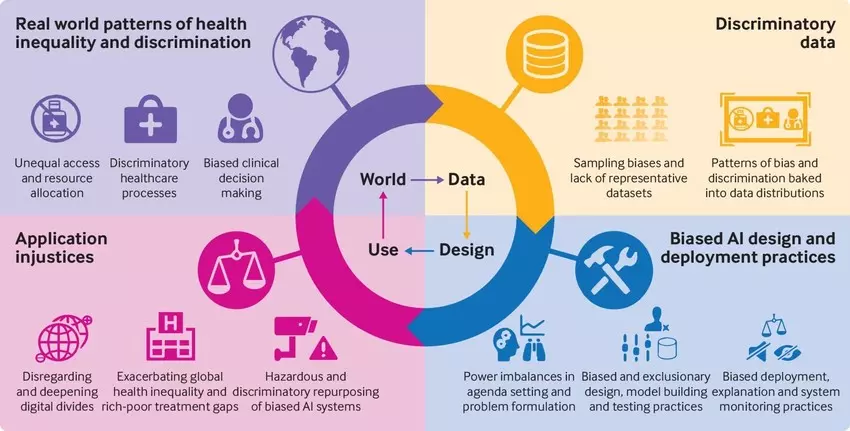Quantum entanglement-as-a-service: "The key technology" for unbreakable networks

Like classical networks, quantum networks require hardware-independent control
plane software to manage data exchange between layers, allocate resources and
control synchronization, the company said. "We want to be the Switzerland of
quantum networking," said Jim Ricotta, Aliro CEO. Networked quantum computers
are needed to run quantum applications such as physics-based secure
communications and distributed quantum computing. "A unified control plane is
one of several foundational technologies that Aliro is focused on as the first
networking company of the quantum era," Ricotta said. "Receiving Air Force
contracts to advance this core technology validates our approach and helps
accelerate the time to market for this and other technologies needed to
realize the potential of quantum communication." Entanglement is a physical
phenomenon that involves tiny things such as individual photons or electrons,
Ricotta said. When they are entangled, "then they become highly correlated"
and appear together. It doesn't matter if they are hundreds of miles apart, he
said.
Design for Your Strengths

Strengths and weaknesses are often mirrors of each other. My aerobic weakness
had, as its inverse, a superstrength of anaerobic power. Indeed, these two
attributes often go hand in hand. Finally, I had figured out how to put this
to use. After the Lillehammer Olympics, I dropped out of the training camp.
But I was more dedicated than ever to skating. I moved to Milwaukee, and
without the financial or logistical support of the Olympic Committee, began a
regimen of work, business school, and self-guided athletic training. I woke up
every day at 6 a.m. and went to the rink. There I put on my pads and blocks
and skated from 7 until 9:30. Then I changed into a suit for my part-time job
as an engineer. At 3 p.m., I left work in Milwaukee and drove to the Kellogg
Business School at Northwestern, a two-hour drive. I had class from 6 to 9
p.m., usually arrived home at 11, and lifted weights until midnight. I did
that every day for two and a half years. Many people assume that being an
Olympic athlete requires a lot of discipline. But in my experience, the
discipline is only physical.
‘Next Normal’ Approaching: Advice From Three Business Leaders On Navigating The Road Ahead
With some analysts predicting a "turnover tsunami" on the horizon, talent
strategy has taken on a new sense of urgency. Lindsey Slaby, Founding
Principal of marketing strategy consultancy Sunday Dinner, focuses on building
stronger marketing organizations. She shares: Organizations are accelerating
growth by attracting new talent muscle and re-skilling their existing teams. A
rigorous approach to talent has never been as important as it is right now.
The relationship between employer and employee has undergone significant
recalibration the last year with the long-term impact of the nation’s largest
work-from-home experiment yet to come into clear view. But much like the
Before Times, perhaps the greatest indicator of how an organization will fare
on the talent front comes down to how it invests in its people and
specifically their future potential. Slaby believes there is a core ingredient
to any winning talent strategy: Successful organizations prioritize learning
and development. Training to anticipate the pace of change is essential. It is
imperative that marketers practice ‘strategy by doing’ and understand the
underlying technology that fuels their go-to-market approach.
The Beauty of Edge Computing

The volume and velocity of data generated at the edge is a primary factor that
will impact how developers allocate resources at the edge and in the cloud. “A
major impact I see is how enterprises will manage their cloud storage because
it’s impractical to save the large amounts of data that the Edge creates
directly to the cloud,” says Will Kelly, technical marketing manager for a
container security startup (@willkelly). “Edge computing is going to shake up
cloud financial models so let’s hope enterprises have access to a cloud
economist or solution architect who can tackle that challenge for them.” With
billions of industrial and consumer IoT devices being deployed, managing the
data is an essential consideration in any edge-to-cloud strategy. “Advanced
consumer applications such as streaming multiplayer games, digital assistants
and autonomous vehicle networks demand low latency data so it is important to
consider the tremendous efficiencies achieved by keeping data physically close
to where it is consumed,” says Scott Schober, President/CEO of Berkeley
Varitronics Systems, Inc. (@ScottBVS).
Facebook Makes a Big Leap to MySQL 8

The company skipped entirely upgrading to MySQL 5.7 release, the major release
between 5.6 and 8.0. At the time, Facebook was building its custom storage
engine, called MyRocks, for MySQL and didn’t want to interrupt the
implementation process, the engineers write. MyRocks is a MySQL adaptation for
RocksDB, a storage engine optimized for fast write performance that Instagram
built for to optimize Cassandra. Facebook itself was using MyRocks to power
its “user database service tier,” but would require some features in MySQL 8.0
to fully support such optimizations. Skipping over version 5.7, however,
complicated the upgrade process. “Skipping a major version like 5.7 introduced
problems, which our migration needed to solve,” the engineers admitted in the
blog post. Servers could not simply be upgraded in place. They had to use
logical dump to capture the data and rebuild the database servers from scratch
— work that took several days in some instances. API changes from 5.6 to 8.0
also had to be rooted out, and supporting two major versions within a single
replica set is just plain tricky.
Research shows AI is often biased. Here's how to make algorithms work for all of us

Inclusive design emphasizes inclusion in the design process. The AI product
should be designed with consideration for diverse groups such as gender, race,
class, and culture. Foreseeability is about predicting the impact the AI
system will have right now and over time. Recent research published by the
Journal of the American Medical Association (JAMA) reviewed more than 70
academic publications based on the diagnostic prowess of doctors against
digital doppelgangers across several areas of clinical medicine. A lot of the
data used in training the algorithms came from only three states:
Massachusetts, California and New York. Will the algorithm generalize well to
a wider population? A lot of researchers are worried about algorithms for
skin-cancer detection. Most of them do not perform well in detecting skin
cancer for darker skin because they were trained primarily on light-skinned
individuals. The developers of the skin-cancer detection model didn't apply
principles of inclusive design in the development of their models.
Leverage the Cloud to Help Consolidate On-Prem Systems
The recommended approach is to "create or recreate" a representation of the
final target system in-the-cloud, but not re-engineer any components into
cloud-native equivalents. The same number of LPARs, same memory/disk/CPU
allocations, same file system structures, same exact IP addresses, same exact
hostnames, and network subnets are created in the cloud that represents as
much as possible a "clone" of the eventual system of record that will exist
on-prem. The benefit of this approach is that you can apply "cloud
flexibility" to what was historically a "cloud stubborn" system. Fast cloning,
ephemeral longevity, software-defined networking, API automation can all be
applied to the temporary stand-in running in the cloud. As design principles
are finalized based on research performed on the cloud version of the system,
those findings can be applied to the on-prem final buildout. To jump-start the
cloud build-out process, it is possible to reuse existing on-prem assets as
the foundation for components built in the cloud. LPARs in the cloud can be
based on existing mksysb images already created on-prem.
Scaling API management for long-term growth

To manage the complexity of the API ecosystem, organisations are embracing API
management tools to identify, control, secure and monitor API use in their
existing applications and services. Having visibility and control of API
consumption provides a solid foundation for expanding API provision,
discovery, adoption and monetisation. Many organizations start with an
in-house developed API management approach. However, as their API management
strategies mature, they often find the increasing complexity of maintaining
and monitoring the usage of APIs, and the components of their API management
solution itself, a drain on technical resources and a source of technical
debt. A common challenge for API management approaches is becoming a victim of
one’s own success. For instance, a company that deploys an API management
solution for a region or department may quickly get requests for access from
other teams seeking to benefit from the value delivered, such as API
discoverability and higher service reliability. While this demand should be
seen as proof of a great approach to digitalization, it adds challenges and
raises questions for example around capacity, access control, administration
rights and governance.
Is Blockchain the Ultimate Cybersecurity Solution for My Applications?
Blockchain can provide a strong and effective solution for securing networked
ledgers. However, it does not guarantee the security of individual
participants or eliminate the need to follow other cybersecurity best
practices. Blockchain application depends on external data or other at-risk
resources; thus, it cannot be a panacea. The blockchain implementation code
and the environments in which the blockchain technology run must be checked
for cyber vulnerabilities. Blockchain technology provides stronger,
transactional security than traditional, centralized computing services for
secured networked transaction ledger. For example, say I use distributed
ledger technology (DLT), an intrinsic blockchain feature, while creating my
blockchain-based application. DLT increases cyberresiliency because it creates
a situation where there is no single point of contact. In the DLT, an attack
on one or a small number of participants does not affect other nodes. Thus,
DLT helps maintain transparency and availability, and continue the
transactions. Another advantage of DLT is that endpoint vulnerabilities are
addressed.
Why bigger isn’t always better in banking

Of course, there are outliers. One of them is Brown Brothers Harriman, a
merchant/investment bank that traces its origins back some 200 years, and that
is the subject of an engaging new book, Inside Money. Historian Zachary
Karabell (disclosure: we were graduate school classmates in the last
millennium) offers not just an intriguing family and personal history, but a
lesson in how to balance risk and ambition against responsibility and
longevity—and in why bigger isn’t always better. The firm’s survival is even
more remarkable given that US financial history often reads as a string of
booms, bubbles, busts, and bailouts. The Panic of 1837. The Panic of 1857. The
Civil War. The Panic of 1907. The Great Depression. The Great Recession of
2008. In finance, leverage—i.e., debt—is the force that allows companies to
lift more than they could under their own power. It’s also the force that can
crush them when circumstances change. And Brown Brothers has thrived in part
by avoiding excessive leverage. Today, the bank primarily “acts as a custodian
for trillions of dollars of global assets,” Karabell writes. “Its culture
revolves around service.”
Quote for the day:
"Leadership is absolutely about inspiring action, but it is also about
guarding against mis-action." -- Simon Sinek
No comments:
Post a Comment